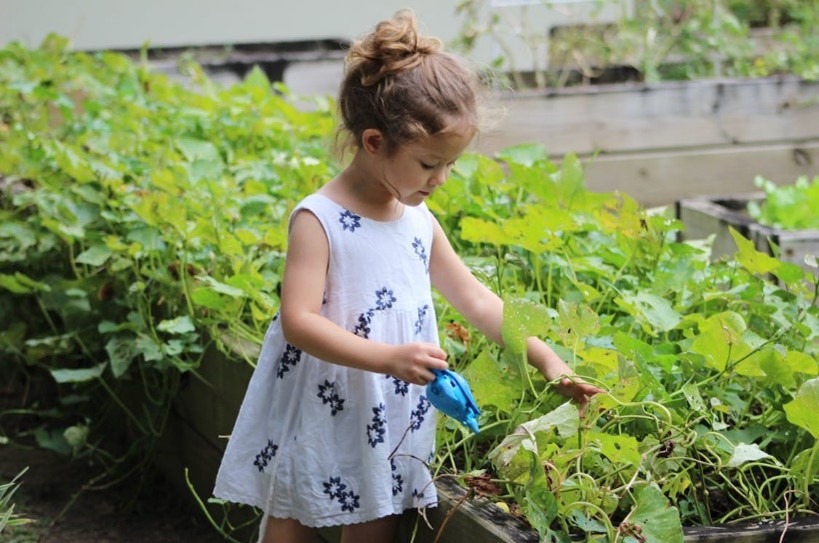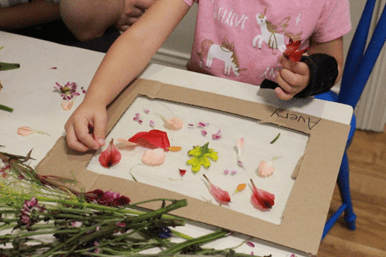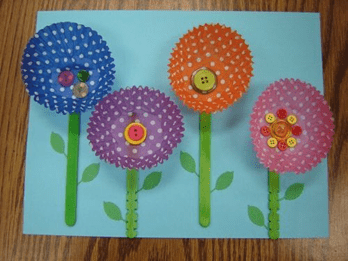Gardening activities are a fantastic, hands-on way to teach children about life cycles, how things change, cause and effect, and many other scientific inquiry skills. There are many ways you can introduce gardening to your preschoolers, from small activities that require only a few supplies to outdoor box gardens you tend to year-round.
No matter the size and shape of your classroom or school; gardening is something you can incorporate year-round to include science and nature in your lessons.
Gardening Activities to Try!
Seed Bags
Supplies Needed: Plastic-zip bags, paper towels, water, bean seeds, a sunny spot, and tape.
Growing a bean seed in a bag is a traditional preschool activity that kids love year after year. It is simple to execute, relatively mess-free, and inexpensive.
Wet a paper towel and have the child fold it into squares. Place the paper towel inside the plastic bag with the bean seeds approximately 2.5 cm apart. Use 2 or 3 beans per child.
Seal the bags and tape them to a sunny window or counter that receives sunlight. The beans should be facing out so you and your students can see and examine them.
They may take 2-3 days before they begin sprouting. Use an eyedropper if the towel dries out to add water but avoid oversaturating.
Observe the seeds’ growth with your students. Discuss similarities and differences between the different seeds and why they may be accruing.
To extend the activity, once they’ve sprouted roots, you can transplant the seeds into small pots of soil and continue to let them grow.
Garden Boxes
Supplies Needed: Wooden garden boxes, soil, kid-size gloves, kid-safe tools, plants or seeds, and watering cans.
Garden boxes are a beautiful way to brighten up your outdoor space or classroom and learn about flowers simultaneously! If you have someone handy, like a parent or co-worker, who can build gardening boxes for you, even better!

Garden boxes are a year-round activity that requires continual care and maintenance and work best with older preschoolers, kindergartners, and before and after school programs.
Choose plants that are easy to grow and maintain for optimal success!
Create a schedule of who cares for the plants and when, what the plants needs, and have regular discussions about observations and changes.
Pressed Flowers
Supplies Needed: Contact paper, tape, various flowers, and plants.
Creating art with pressed flowers allows children to express themselves creatively while learning about the properties of plants and flowers.
Create a frame for each child by affixing a large piece of contact paper sticky side up. You can use tape to secure the contact paper or cardboard to create frames.
Ask a local flower shop to donate any flowers they can no longer use or purchase inexpensive bouquets from the store.
Once your students complete their designs, place another piece of contact paper on the backside to secure it.

Gardening Sensory Bin
Supplies Needed: Varies. Options: Different seeds or soil, kid-safe gardening tools, measuring cups, plastic planting pots, and kid-size gardening gloves.
Sensory bins are the perfect way to bring gardening concepts indoors. Kids love exploring with their hands, and sensory bins provide a safe way to experiment with gardening elements.
While playing, your students will explore concepts of texture, counting, measuring, and scientific inquiry.
Cupcake Liner Flowers
Supplies Needed: Varies: Paper, green construction paper, craft sticks, buttons, colorful cupcake liners, scissors, glue.
After discussing flowers and plants, create an art station where your children can design a garden with cupcake lines and other art supplies. For younger students, you can have leaves and stems pre-cut. For older preschoolers and kindergarteners, trace the shapes but allow them to cut them themselves.

Your students will work on fine motor skills, artistic expression, and scientific inquiry as they design their unique flowerbeds.



